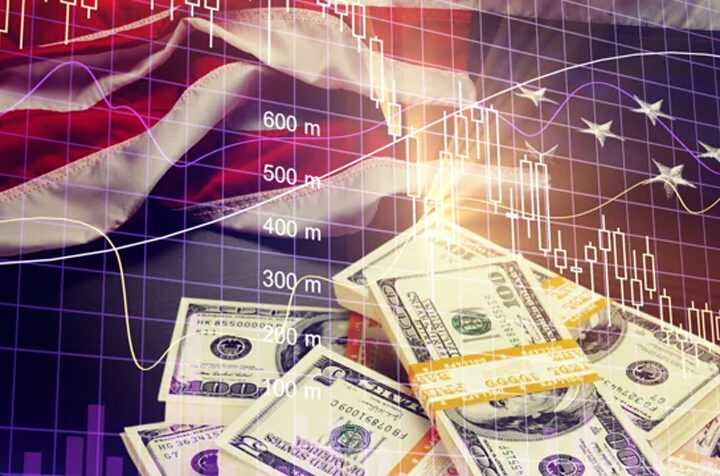By Jeffrey Halley
The ‘who can be the most hawkish Fed President’ quiz continued overnight as James Bullard came out swinging, suggesting that Fed Funds may need to rise to a “neutral” rate of 3.50%, suggesting a 0.75% rate hike wasn’t out of the question.
The impact of his statements was minimal as it likely doesn’t reflect the views of the FOMC, yet.
US bond and equity markets gyrated around unchanged in a noisy session, but ultimately didn’t move that much, while upbeat results by Bank of America were balanced out by the Bullard comments.
The exception was currency markets where the US Dollar rose again, notably bulldozing the perpetually low-yield Japanese Yen.
Bullard’s comments encapsulate the quandary that many of the world’s central banks have found themselves in. Having completely missed the ball around transitory versus embedded inflation, there are no palatable solutions. Luckily, they have plenty of excuses in the shape of the pandemic and the Ukraine war.
Central banks can now play catch-up, hike aggressively and run the risk of recessions, something they have weaned the world of since the GFC via monetary policy. Getting the pain over and done may be the least worst option.
Alternatively, they can keep the lights on by letting inflation run hot, hoping that the asset price inflation and erosion of their citizen’s spending power doesn’t cause social unrest.
The US and other Anglo-Saxon economies are probably looking at option one, while Europe and Asia seem to be erring towards option two. Naturally, the poor countries that lie in between will suffer the most.
Australia is an outlier in this respect, with the RBA minutes on Tuesday suggesting the policy remains accommodative, which in central bank speak, is an understatement.
The data suggested, however, that the timing of a first rate hike will be brought forward.
Similarly, the Bank of Indonesia will likely be in a similar position Tuesday as core inflation and headline inflation measures creep higher. Ask anyone here trying to buy cooking oil at the moment. Bank Indonesia should hold rates steady, but may indicate that the first rate hikes are now very close.
Thankfully, Indonesia is running commodity-export-driven record surpluses now, sheltering the Rupiah from rate differential pressures. If that changes, BI will need to rapidly reassess its cautious position. That is a story much of Asia will face this year if USD/JPY is anything to go by.
Japan will release February Industrial Production and Capacity Utilisation. The data will only partly capture the impact of the Russian invasion of Ukraine, and thus the expected slight improvements to the numbers will be old news.
Watching JPY
Far more attention is now focused on the collapse of the Japanese Yen in the face of a soaring interest rate differential.
US Housing Starts and Building Permits for March on Tuesday evening carry some downside risks as mortgage rates soar in the US. Weak data will have the recession word bandied around, but could be good for equities and bad for the US Dollar as the street pulls in FOMC hiking expectations.
We have some more Fed talking heads, but equity markets will likely be closely watching results from Netflix this evening.
Europe and the UK return to work Tuesday and are likely to be in a somber mood as Ukraine’s President Zelensky announced overnight that Russia’s eastern offensive had begun. That will probably introduce some more geopolitical risk into financial markets again and with Europe on the frontlines, equities and the Euro may suffer.
Gold spikes on war risk
Gold could be a winner, as it spiked to $1998.50 an ounce after the initial headline, before beating a sharp retreat to unchanged. Gold has quietly ground its way higher over the past week, ignoring a strong US Dollar and higher US yields, so it’s definitely been telling us something.
It likely faces some heavy option-related selling interest at $2000.00. Russian tanks rolling en masse across the plains of eastern Ukraine could be enough to finally overcome that barrier.
In the same vein, Bitcoin has a frisky 5.0%+ range overnight, dropping towards $38,000.00 before jumping to near $41,000.00 after the Zelensky headlines.
It is too soon to say Bitcoin’s geopolitical risk-hedge time has finally come. At various stages it has been a hedge against inflation, deflation, dollar debasement, political risk, geopolitical risk, Elon Musk risk, European energy restrictions shutting tanning salons prompting resignations at the ECB, trans fats and processed sugar.
My support/resistance levels are $$36,650.00 and $47,250.00. The wedge is narrowing, but until one of those sides breaks, I will ignore the noise, the empty pizza boxes next to computer monitors, and the HODL gnomes.
Libya nerves lift oil prices
Libyan officials announced several force majeures on oil deliveries overnight, as expected. With export terminals shut down due to protests or occupation, oil prices edged higher, helped by the Ukrainian comments that Russia’s eastern assault had begun. It was enough to send an always nervous oil market slightly higher.
Brent crude rose 1.40% to $122.40 a barrel, where it remains in subdued Asian trading. WTI leapt 3.25% higher to $104.30, coat-tailing surging US natural gas prices as a spring cold snap swept northern US states. It has edged 0.50% lower to $103.70 in Asia.
Markets in Asia seem content to adopt a wait-and-see approach, reluctant to chase rallying prices higher. China’s growth concerns are capping gains, but it seems that Asia is waiting for confirmation of the Russian offensive and potentially, another wave of geopolitical buying to hit the market.
With so much volatility in intraday oil prices, and extreme reactions to headline risks, technical levels have become rather irrelevant.
Overall, expect Brent to remain in a choppy $100.00-120.00 range, with WTI in a $95.00-115.00 range. Brent crude has further support at $96.00, and WTI at $93.00 a barrel.
Jeffrey Halley is Senior Market Analyst, Asia Pacific at OANDA
Opinions are the author’s, not necessarily that of OANDA Global Corporation or any of its affiliates, subsidiaries, officers or directors. Leveraged trading is high risk and not suitable for all. Losses can exceed investments.







